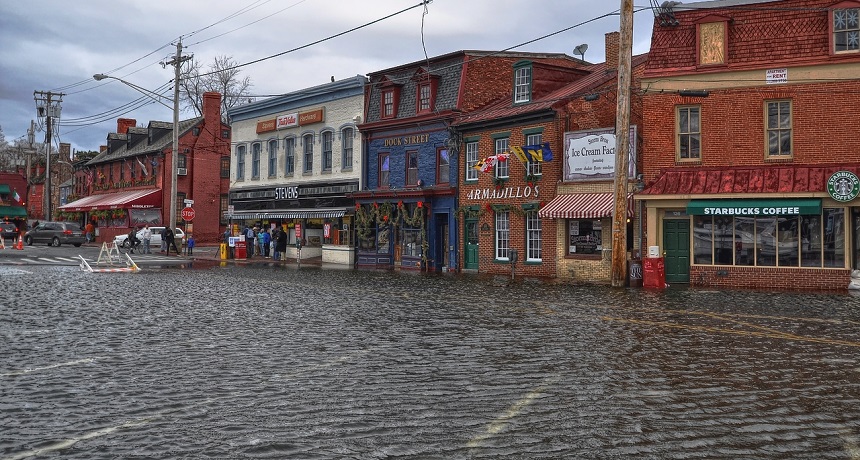Questions for Tides Swamp U.S. Cities

Amy McGovern/Flickr
Share this:
- Share via email (Opens in new window) Email
- Click to share on Facebook (Opens in new window) Facebook
- Click to share on X (Opens in new window) X
- Click to share on Pinterest (Opens in new window) Pinterest
- Click to share on Reddit (Opens in new window) Reddit
- Share to Google Classroom (Opens in new window) Google Classroom
- Click to print (Opens in new window) Print
SCIENCE
Before reading
1. What are tides and what impacts do they have on the environment?
2. What is sea level rise and what is propelling it upward?
During reading
1. How much has sea level risen in the past 135 years?
2. What are nuisance floods and how many does Annapolis now average per year?
3. The UCS estimates that in 30 years, some coastal areas will experience coastal flooding more frequently. How much more frequently?
4. What do tide gauges measure?
5. Explain the two main reasons why sea level has been rising.
6. What causes tides?
7. In 30 years, what share of the U.S. coastal cities that were studied are expected to experience 100 tidal floods a year? How many might Washington D.C. have at that point?
8. What is New York City doing to prepare for future tidal flooding?
9. By 2100, sea levels are projected to rise how much?
After reading
1. Working with one or more classmates, choose a major U.S. East Coast city and put together a poster on the likely risks to residents, businesses and wildlife from frequent tidal flooding.
2. Using the links to one or both of the reports described in this story, chart which regions are at risk for the biggest changes and why. What apparent role does subsidence have in which regions face the biggest risks?
MATHEMATICS
1. Between 1957 and 1963, the rate of nuisance flooding was much lower than in the seven-year period of from 2007 through 2013. Take the rate of change reported for Charleston or Annapolis. Now compute the difference in the rate from the earlier period to the later one and divide it by the number of years between those two periods. Use those numbers to figure out the average rate of increase in nuisance flooding from 1963 to 2013.